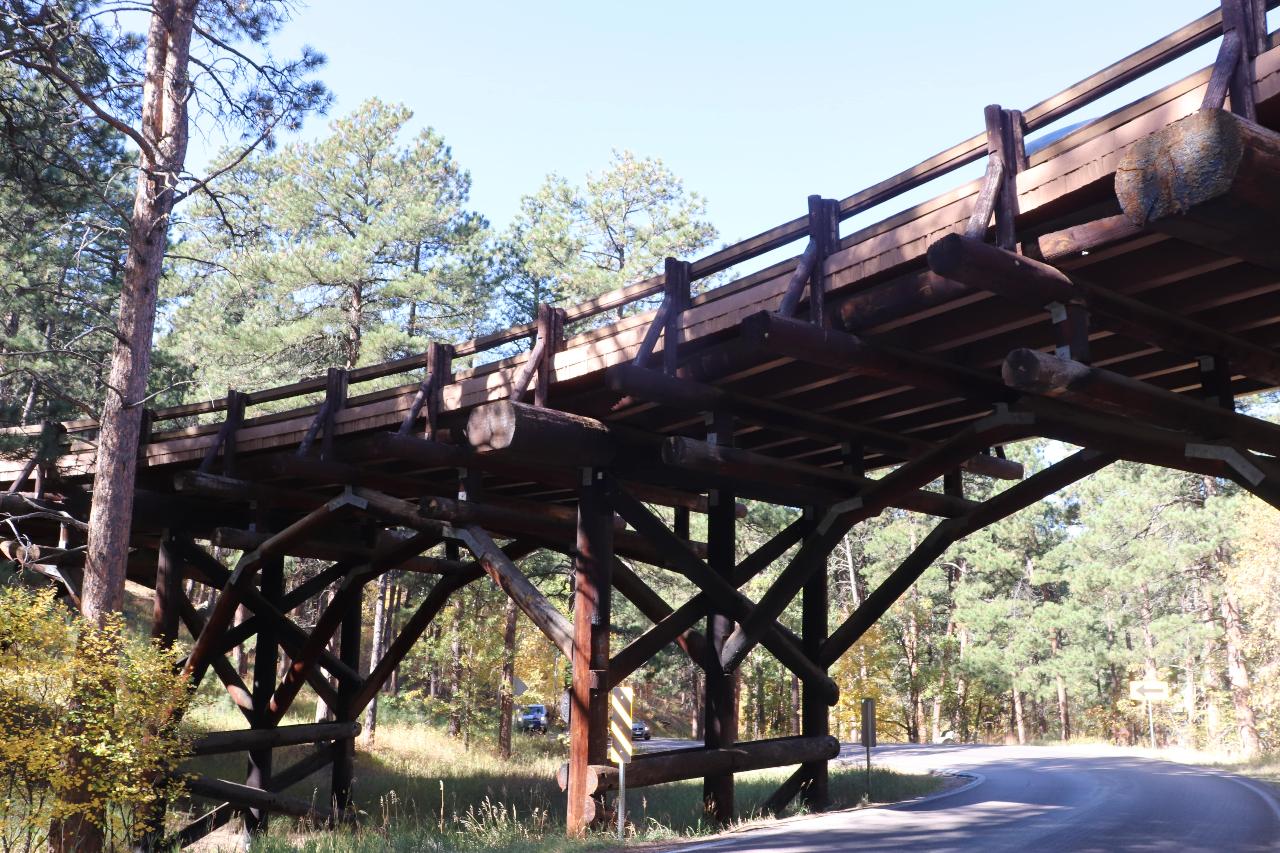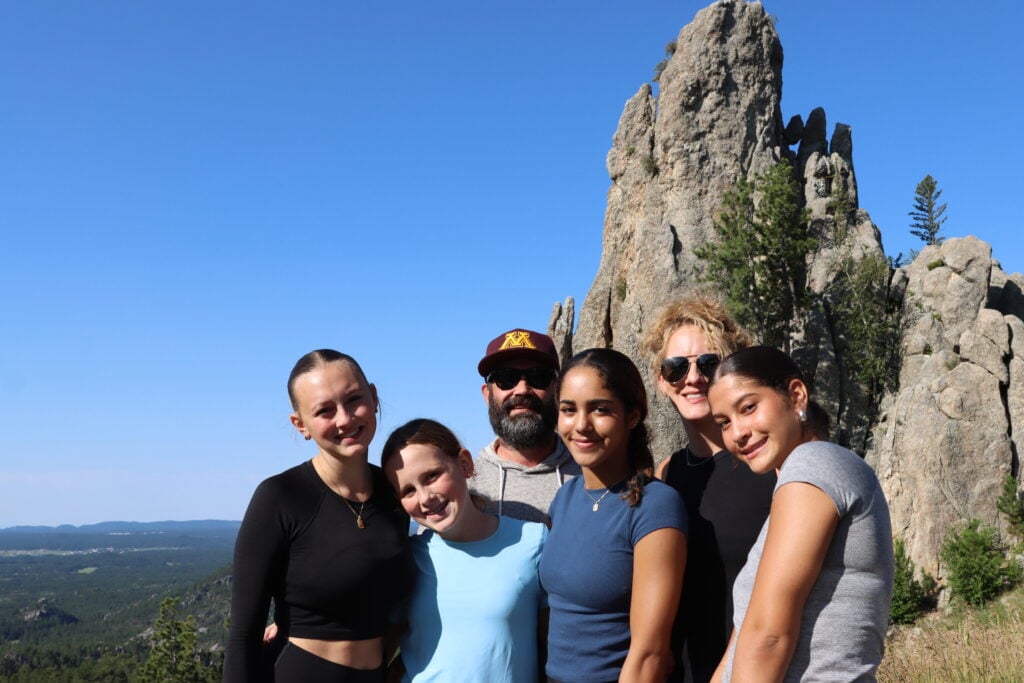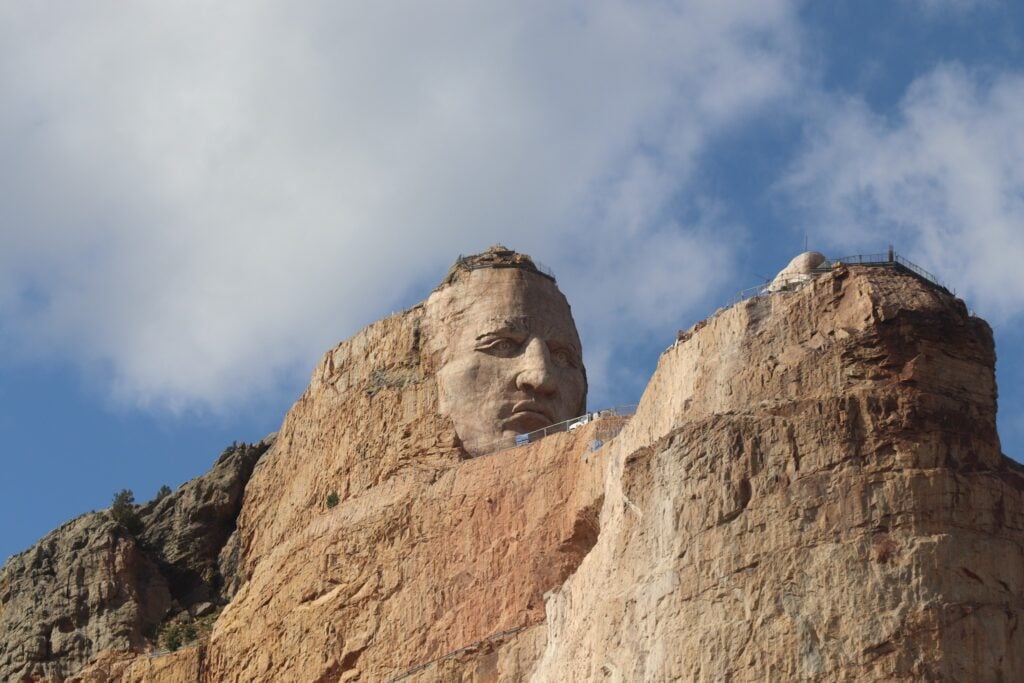
The Pigtail Bridges of Iron Mountain Road are a remarkable engineering marvel. These spiral-shaped bridges gracefully wind their way up the mountainside, providing breathtaking views of the surrounding landscape. Discover the beauty and ingenuity of the Pigtail Bridges as you traverse Iron Mountain Road. The Pigtail Bridges of Iron Mountain Road are a testament to remarkable engineering. With their spiral shape, they offer stunning views of the surrounding landscape.
The Pigtail Bridges are located at the northern point of Iron Mountain Road (16A), which terminates just before Mount Rushmore. Completed in 1930, Iron Mountain Road was built with the sole purpose of maximizing the enjoyment of visitors with the ever-popular automobile. C.C. Gideon, or “C.C.” as he was known, is the engineer, and Peter Norbeck is the visionary. When construction began on Mount Rushmore in 1927, there was a need to connect Custer State Park in the South with Rushmore to the north. When funds were made available, the idea was to bypass the hills and construct a more direct road. This would have been less costly, easier to maintain, and faster to travel.
Peter Norbeck objected, and with his foresight, he pushed through what became one of the most sought-after roads to travel in the United States. The automobile had a significant influence on construction and design. You might think, well, of course, it did, but let’s look at why. In 1900 there were 8,000 automobiles on the road, by 1910 that increased to 350,000. As mass production and costs decreased, that number jumped to 7.5 million in 1920. The middle class was growing, and so was their desire for recreation. The automobile would take them there. We were becoming a Nation of automobiles.
Norbeck had a knack for long-term visionary planning. His rejection of the initial plans proved correct, and Iron Mountain Road became a reality. The idea was to maximize visitors’ experience, especially when traveling from South to North. Measures were taken to ensure the path would highlight the beautiful vistas while doing as little harm to the environment as possible. The road itself was to be an automobile owner’s playground.
Iron Mountain Road boasts 17 miles, 314 curves, 14 switchbacks, three pigtails, two tunnels, four presidents, and two splits. Wow! It should be mentioned that the tunnels leading to Mount Rushmore were perfectly aligned, so as you enter, you will see that Mount Rushmore is framed majestically at the far end. It teases visitors the entire way, building excitement for the participants. The Pigtail Bridges complement the road by solving a problem and providing an exciting corkscrew route down the mountain. The route reached a very steep point, and a solution was needed that switchbacks couldn’t quickly solve. This led to the idea of the Pigtail Bridges, which were rare but not unheard of at the time. The bridges act like elevators, going up or down depending on the direction. Locally harvested pine would be used in its construction, and great pains have been taken since to preserve its place on the National Register of Historic Places.
The Pigtail Bridges provide a whimsical ride down the mountain before reaching Mount Rushmore. Iron Mountain Road, in its entirety, draws visitors far and wide. Most notably, the Motorcycle Rally Riders zoom through this area in the first weeks of August each year. Car enthusiasts travel to the area to experience a road not made primarily with function but with form.
My XO Adventures takes visitors along this route each day, stopping to take in the views and talk about the history behind the construction and the people who made it possible. It’s yet another example of Peter Norbeck’s vision of bringing visitors to the Black Hills in a delightful way. #HIFromSD #myxoadventures #blackhillsandbeyond #visitrapidcity #pigtailbridges
Daniel Milks
Owner of My XO Adventures, Traveler and occasional writer.






